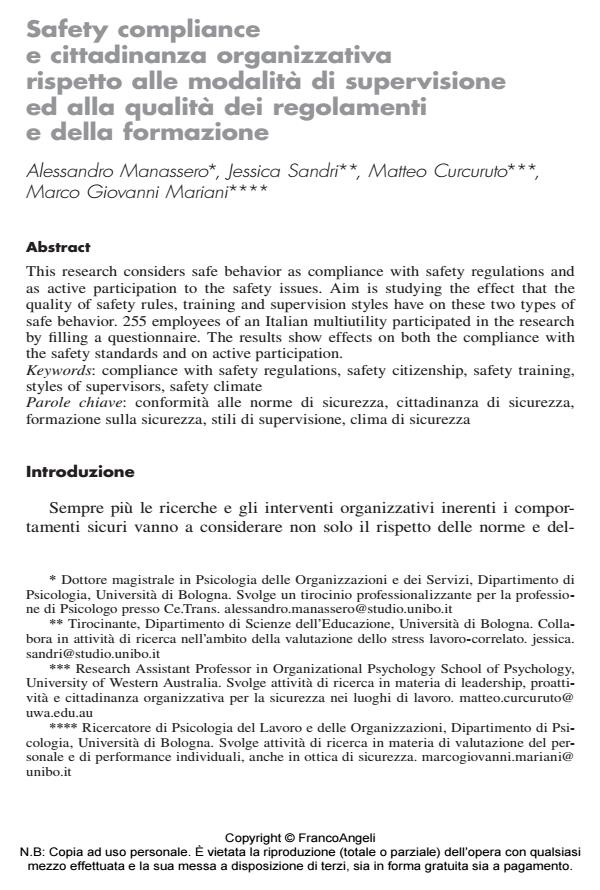Safety compliance e cittadinanza organizzativa rispetto alle modalità di supervisione ed alla qualità dei regolamenti e della formazione
Journal title SICUREZZA E SCIENZE SOCIALI
Author/s Alessandro Monassero, Jessica Sandri, Matteo Curcuruto, Marco Giovanni Mariani
Publishing Year 2015 Issue 2015/1
Language Italian Pages 15 P. 65-79 File size 118 KB
DOI 10.3280/SISS2015-001006
DOI is like a bar code for intellectual property: to have more infomation
click here
Below, you can see the article first page
If you want to buy this article in PDF format, you can do it, following the instructions to buy download credits

FrancoAngeli is member of Publishers International Linking Association, Inc (PILA), a not-for-profit association which run the CrossRef service enabling links to and from online scholarly content.
This research considers safe behavior as compliance with safety regulations and as active participation to the safety issues. Aim is studying the effect that the quality of safety rules, training and supervision styles have on these two types of safe behavior. 255 employees of an Italian multiutility participated in the research by filling a questionnaire. The results show effects on both the compliance with the safety standards and on active participation.
Keywords: Compliance with safety regulations, safety citizenship, safety training, styles of supervisors, safety climate
Alessandro Monassero, Jessica Sandri, Matteo Curcuruto, Marco Giovanni Mariani, Safety compliance e cittadinanza organizzativa rispetto alle modalità di supervisione ed alla qualità dei regolamenti e della formazione in "SICUREZZA E SCIENZE SOCIALI" 1/2015, pp 65-79, DOI: 10.3280/SISS2015-001006